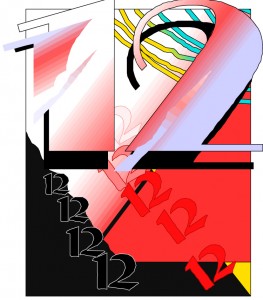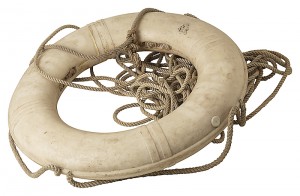The New Testament concept of redmeption or salvation is rooted in the Torah (the books of Moses). In this video, we explore the seven steps of redemption from Exodus 6, and see how they relate to the upward progression in a believr’s spiritual journey. We will also discover how they relate to the seven biblical festivals.
Tag Archives: Redemption
On Blood, Goats, Demons and Yeshua
Leviticus 17:7, Sacrifices to demons. Sa’ar, the Hebrew word for goat, refers to the Egyptian goat gods, or goat demons that were believed to inhabit the wilderness (The ArtScroll Tanach Series Vayikra Leviticus Commentary, p. 313; Keil and Delitzsch, p. 593). In several places, the KJV and NAS translate this word as satyr (e.g., Isa 13:21; 34:14), which, in Greek and Roman mythology were associated with Pan, the half goat and half man-like creature. These demonic forces were believed to be destructive causing fear and turbulence, murder and mayhem (Ibid., ArtScroll Tanach Series Vayikra). Interestingly, sa’ar and Se’ir as in Mount Seir, the home of Edom (Num 24:18), share the same Hebrew consonants and derive from the same root word. From this, the Jewish sages deduce that Edom, the descendents of Esau—Israel’s perpetual enemies down through the ages (even to the last days)—was the embodiment of evil (Ibid.). Additionally, in occult lore, there exists a creature called Baphomet, which is represented by a horned goat’s head inside of an inverted star or pentagram. The origins of this symbol are debated as to whether it goes back to the satyr or is more recent origination. However, it is well-documented that the use of blood (in sacrificial and cannibalistic rites) and its veneration is an important aspect of Satanic rituals even into modern times. This is one reason why YHVH forbad the Israelites from eating animal blood (verse 10).
From this passage in Leviticus (and the surrounding verses), it should be clear that YHVH not only expected the Israelites to respect blood (see verse 11), but to properly dispose of it in a way that would preclude them being tempted to engage in idolatrous and demonic rituals. In our notes under verse 11, we will see why YHVH valued the blood so highly.
Leviticus 17:11, The life of the flesh. Long before modern science confirmed this in the seventeenth-century, YHVH revealed in the Torah that the life of flesh is in the blood.
Leviticus 17:11 is a crucial scripture theologically regarding the blood atonement. Presently, the Jewish religion offers no hope for its followers in light of this passage. For believers in Yeshua, the message of Messiah and him crucified addresses this issue. The importance of the blood of the Lamb in the atonement for sins as well as in overcoming sin, sickness (1 Peter 2:24) and the powers of hell (Rev 12:11) cannot be over emphasized. How thorough is your understanding of the power of the blood? Do you appropriate this power on a regular basis in your life? The power of the blood is central to the efficacy of the communion elements and specifically to the concept of redemption. The concept of the blood of Yeshua is central to the gospel message with some 50 references to it in the Testimony of Yeshua. Such terms are used as “blood of the Lamb,” “blood of Messiah,” “precious blood of Messiah,” “blood of the everlasting covenant,” “redemption through Messiah’s blood,” “blood of His cross,” “communion of the blood of Messiah,” “faith in his blood,” and “purchased with his blood.” Is the reality of the blood of Messiah central to your faith walk? How so? If not, why not? (Read and ponder Matt 26:28; Eph 1:7; Heb 9:12,22; 10:19; 12:24; 1 Pet 1:2, 19; 1 John 1:7; Rev 1:5; 7:14; 12:11.)
Exodus: O’view and Main Themes
Exodus (Shemot) is the book whose principle theme is redemption—Israel’s deliverance from Egypt (Mitzraim). Here we learn how YHVH saves his people and we are shown that his people are redeemed in order to worship him.

The Theme of Redemption
Say, therefore, to the sons of Israel, “I am YHVH, and I will bring you out from under the burdens of the Egyptians, and I will deliver you from their bondage. I will also redeem you with an outstretched arm and with great judgments. Then I will take you for My people, and I will be your Elohim; and you shall know that I am YHVH your Elohim, who brought you out from under the burdens of the Egyptians. I will bring you to the land which I swore to give to Abraham, Isaac, and Jacob, and I will give it to you for a possession; I am YHVH.” (Exod 6:6-8, emphasis added)
Worship
And he said, “Certainly I will be with you, and this shall be a token unto you, that I have sent you, when you have brought forth the people out of Egypt, you shall serve Elohim upon this mountain.” (Exod 3:12, emphasis added)
And I say unto you, “Let my son go, that he may serve [Hebr. awvawd, Strong’s H5647] me, and if you refuse to let him go, behold, I will slay your son, even your firstborn.” (Exod 4:23, emphasis added)
And you shall say unto him, “YHVH Elohim of the Hebrews has sent me to you, saying, ‘Let my people go, that they may serve [Hebr. awvawd, Strong’s H5647] me in the wilderness, and, behold, until now you would not hear.’” (Exod 7:16, emphasis added)
The Basic Outline of Exodus
- Chapters 1–6 show us the need for redemption.
- Chapters 7–11 show us the power or might of the Redeemer as the ten plagues are poured out upon Egypt.
- Chapters 12–18 show us the character of redemption; purchased by blood and emancipated by power.
- Chapters 19–24 we are taught the duty of the redeemed.
- Chapters 25–40 we see the restoration of the redeemed—provisions are made for the failures of the redeemed.
The Metaphors in Exodus
- Egypt is a metaphor for the world, the place of sin and bondage where one is held captive before being delivered or redeemed by the power of YHVH and the blood of Yeshua, the Lamb of Elohim. It is interesting to note that although Egypt was the land of science and art, it was similarly the land of death. Their religion was fixated with death.
- Pharaoh is a metaphor for Satan, a merciless taskmaster who opposes the people of YHVH every step of the way.
- Pharaoh’s magicians is a metaphor for demonic spirits, doing Pharaoh’s bidding in opposing Israel.
- Moses is a prophetic metaphor for Yeshua (his first coming), the Deliverer of his people from the bondage and power of sin, death and hell, which is the power of the enemy, Satan.
- The blood of the lamb on the door posts is a metaphor for Yeshua, the Redeemer, whose death on the cross atoned for man’s sins causing YHVH’s judgment against sin to pass over us.
- The crossing of the Red Sea is a metaphor for our union with Messiah Yeshua in his death and resurrection via the ritual of tevilah (immersion or baptism) at a mikvah (a gathering of waters).
- The journey through the wilderness is a metaphor for the trials and testing that occur during the redeemed believer’s spiritual walk through this life with YHVH’s provision to meet every need and his protection from every attack of the adversary.
- The giving of the Torah is a metaphor for the obedience and submission that we owe to YHVH, our new Master.
- The Tabernacle of Moses with its furnishings is a metaphor for YHVH’s plan of redemption (salvation) for mankind and the steps in man’s spiritual maturation into intimacy with the Father through Yeshua the Messiah.
The Final Redemption of the 12 Tribes
Genesis 47:28, The Jewish sages recognize that this final portion of Genesis chronicles Jacob’s wish to reveal to his sons prophetic understandings pertaining to Israel’s long and numerous exiles, culminating in the final redemption (return of Israel from her exile in “Babylon” at the end of the age prior to the return of Messiah at which time the two houses of Israel will be reunited under Messiah Son of David). Jacob states this in 49:1 when he gives his prophecies relating to what will befall his sons “in the last days.” Prior to the establishment of the Messianic Age (Millennium) all Israel would go into a time of darkness, gloom and exile. The sages teach that this idea is implicated in the fact that the Torah scroll fails to place the customary nine spaces between the last word of the previous parashah and the first word of the present one. There is only a one space gap in Hebrew letters which predicts the “closing in” of Israel as they go into exile and captivity in Egypt.
Here’s an excerpt from a larger, yet unpublished, article on the timing of the return of the 12 tribes to the land of Israel in the last days. This extract deals with the concept of redemption in Israel’s long history, and specifically with the final redemption of the last days.
I hope you enjoy this Shabbat-day study.
The Repeating Paradigm of Israel’s Redemption
Biblically, the concept of the return of exiled and scattered Israel (including Ephraim) to the land of Israel is tied to the idea of redemption. Biblically, the concept of redemption involves a stronger person (the redeemer) intervening on behalf of a weaker person (the enslaved, i.e., the one needing redemption), defeating the captor of the slave thus allowing the enslaved to go free.
The first biblical example of this process occurred when Elohim redeemed Israel out of Egypt. The biblical prophets compared this first exodus to a greater, or second exodus that is yet to occur in the future. In Jewish thought, the exodus out of Egypt is called the first redemption, yet the biblical prophets also speak of Israel going into captivity again — this time not to Egypt, but into the exile of the nations. From this place of exile and spiritual Continue reading
Redemption: The Strong Arm of YHVH to Save His People (pt 1)
Exodus 6:6–8, I will. In this passage, YHVH reveals to Moses the seven steps of Israel’s redemption, which are actually promises of what YHVH will do for Israel.
Wherefore say unto the children of Israel, “I am YHVH, and I will bring you out from under the burdens of the Egyptians, and I will rid you out of their bondage, and I will redeem [Strong’s H1350, ga’al meaning “to buy back, ransom for money”] you with a stretched out arm, and with great judgments, and I will take you to me for a people, and I will be to you an Elohim, and you shall know that I am YHVH your Elohim, which brings you out from under the burdens of the Egyptians. And I will bring you in unto the land, concerning the which I did swear to give it to Abraham, to Isaac, and to Jacob; and I will give it you for an heritage: I am YHVH.” (Exod 6:6–8, emphasis added)
Here we find listed the seven steps of redemption YHVH lays out for Israel. YHVH uses his covenant name (YHVH) three times during the seven promises: at the beginning, middle and end. He wraps his covenant promises in his covenant name for emphasis.
YHVH is telling Moses (and us, too!!) to just believe him! Believe his Word; trust that he is who he says he is (which is what his covenant name implies: I am who I am, or I will be what I will be; i.e., I will be your All Sufficient One and will meet your every need … So just trust and believe!)
Redemption involves three things.
First, Continue reading



